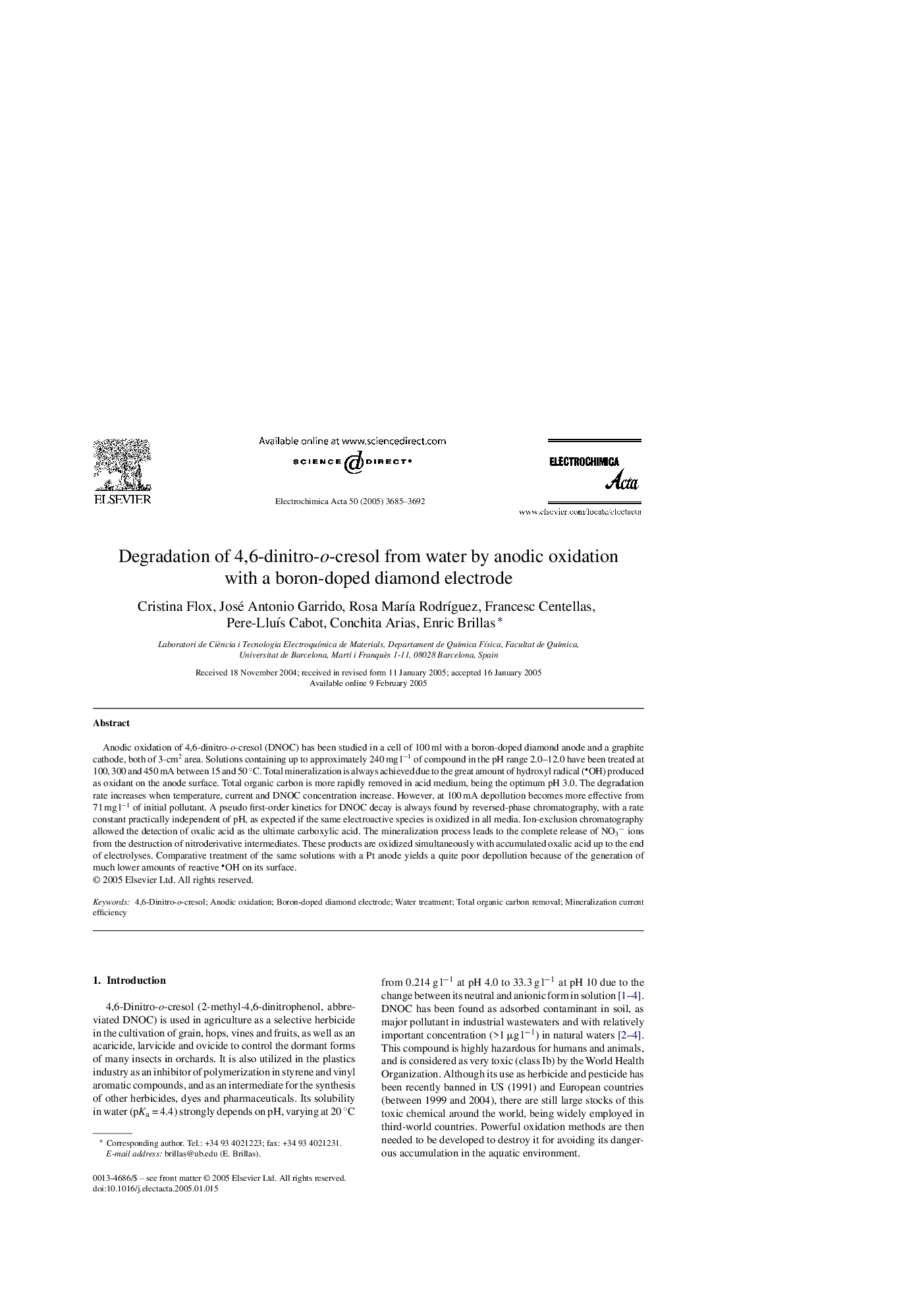| کد مقاله | کد نشریه | سال انتشار | مقاله انگلیسی | نسخه تمام متن |
|---|---|---|---|---|
| 196961 | 459864 | 2005 | 8 صفحه PDF | دانلود رایگان |

Anodic oxidation of 4,6-dinitro-o-cresol (DNOC) has been studied in a cell of 100 ml with a boron-doped diamond anode and a graphite cathode, both of 3-cm2 area. Solutions containing up to approximately 240 mg l−1 of compound in the pH range 2.0–12.0 have been treated at 100, 300 and 450 mA between 15 and 50 °C. Total mineralization is always achieved due to the great amount of hydroxyl radical (OH) produced as oxidant on the anode surface. Total organic carbon is more rapidly removed in acid medium, being the optimum pH 3.0. The degradation rate increases when temperature, current and DNOC concentration increase. However, at 100 mA depollution becomes more effective from 71 mg l−1 of initial pollutant. A pseudo first-order kinetics for DNOC decay is always found by reversed-phase chromatography, with a rate constant practically independent of pH, as expected if the same electroactive species is oxidized in all media. Ion-exclusion chromatography allowed the detection of oxalic acid as the ultimate carboxylic acid. The mineralization process leads to the complete release of NO3− ions from the destruction of nitroderivative intermediates. These products are oxidized simultaneously with accumulated oxalic acid up to the end of electrolyses. Comparative treatment of the same solutions with a Pt anode yields a quite poor depollution because of the generation of much lower amounts of reactive OH on its surface.
Journal: Electrochimica Acta - Volume 50, Issue 18, 10 June 2005, Pages 3685–3692